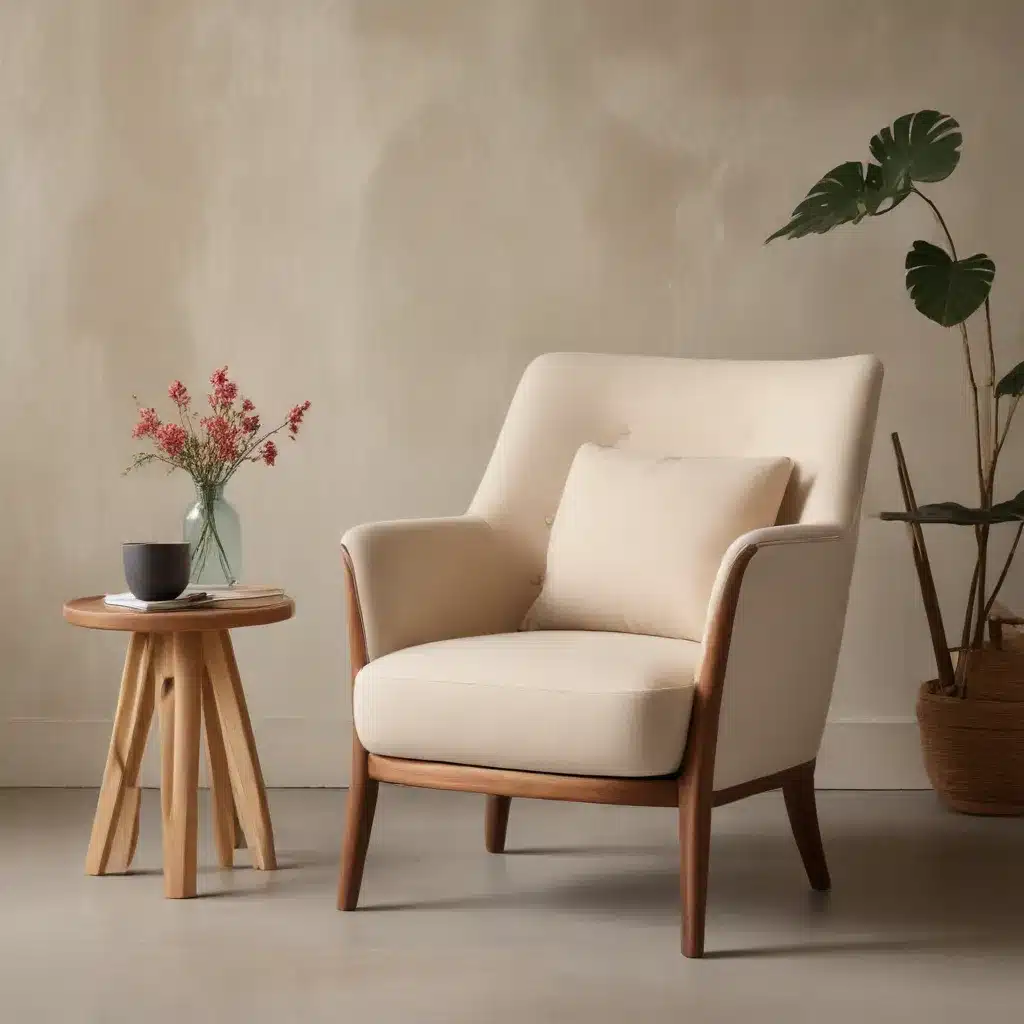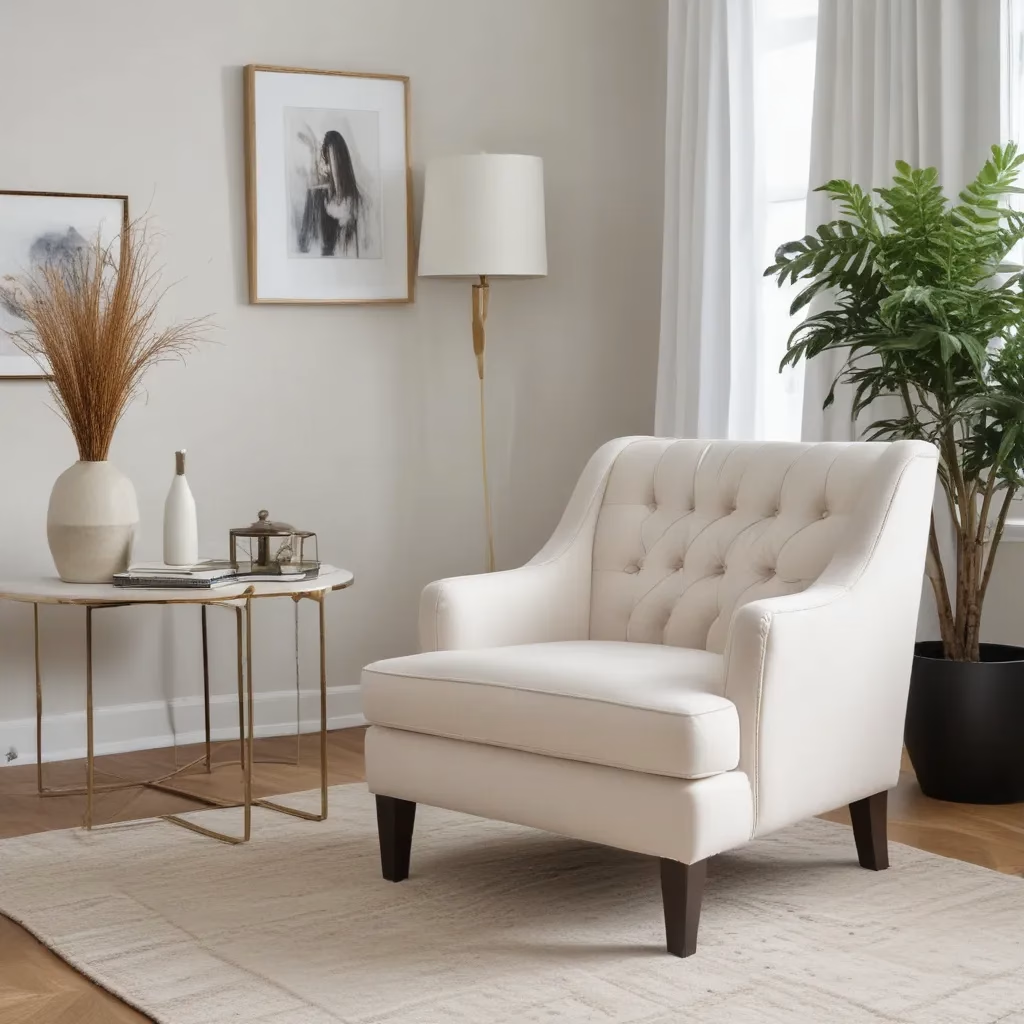
The Resurgence of Handcrafted Furniture in the UK
In recent years, the UK has witnessed a significant shift towards handcrafted furniture, particularly in the realm of armchairs. This trend reflects a growing appreciation for artisanal craftsmanship and a desire for unique, high-quality pieces that stand out in home interiors. Handmade armchairs are becoming centerpieces in living rooms across the country, offering not just seating but a statement of personal style and a commitment to supporting skilled artisans.
The appeal of handcrafted armchairs lies in their individuality. Each piece tells a story, from the selection of materials to the techniques used in its construction. Unlike mass-produced furniture, these armchairs often feature subtle variations that make them one-of-a-kind. This uniqueness resonates with homeowners who are looking to create spaces that reflect their personality and values.
Moreover, the revival of handmade furniture aligns with a broader movement towards sustainability and ethical consumption. Many UK consumers are now prioritizing locally-made products, reducing carbon footprints associated with long-distance shipping, and supporting local economies. Handcrafted armchairs often use sustainably sourced materials and traditional techniques that have stood the test of time, appealing to environmentally conscious buyers.
Choosing the Right Materials for Your Artisanal Armchair
When selecting an artisanal armchair, the choice of materials is paramount. The right materials not only determine the chair’s appearance but also its comfort, durability, and environmental impact. Here’s a comparison of popular materials used in handcrafted armchairs:
| Material | Durability | Comfort | Sustainability | Maintenance |
|---|---|---|---|---|
| Leather | High | High | Moderate | Moderate |
| Wool | High | High | High | Low |
| Cotton | Moderate | High | High | Moderate |
| Linen | Moderate | High | High | High |
| Velvet | Moderate | High | Varies | High |
Leather remains a popular choice for its durability and timeless appeal. It ages beautifully, developing a patina that adds character over time. However, for those seeking more sustainable options, wool and cotton are excellent alternatives. Wool, in particular, is renowned for its natural resilience, comfort, and eco-friendly properties.
Linen offers a crisp, clean look ideal for contemporary interiors, though it requires more maintenance to keep it looking its best. Velvet, with its luxurious feel, can be made from various fibers, so its sustainability varies. When choosing velvet, opt for versions made from natural or recycled fibers for a more environmentally friendly option.
The frame of the chair is equally important. Hardwoods like oak, beech, and ash are favored for their strength and longevity. These woods can be sourced from sustainably managed forests in the UK, further reducing the environmental impact of the furniture.
The Craftsmanship Behind Artisanal Armchairs
The creation of a handcrafted armchair is a meticulous process that combines traditional techniques with modern design sensibilities. Skilled artisans dedicate hours to each piece, ensuring that every detail is perfect. This level of attention is what sets artisanal furniture apart from mass-produced alternatives.
The process typically begins with the frame construction. Craftsmen carefully select and cut the wood, joining pieces using time-honored methods such as mortise and tenon joints or dovetail joints. These techniques not only provide structural integrity but also showcase the artisan’s skill.
Next comes the upholstery process. This involves building up layers of padding and materials to create a comfortable and durable seat. Natural materials like horsehair, cotton, and wool are often used for padding, providing superior comfort and breathability compared to synthetic alternatives.
The final stage involves covering the chair with the chosen fabric or leather. This requires precision and an eye for detail to ensure smooth lines and even tension across the surface. Hand-stitched details and trims may be added, further enhancing the chair’s uniqueness.
Incorporating Artisanal Armchairs into Your Home
Integrating a handcrafted armchair into your home decor requires thoughtful consideration. These pieces often serve as focal points, so it’s important to choose a style that complements your existing interior while making a statement.
For traditional interiors, consider armchairs with classic silhouettes upholstered in rich leathers or timeless fabrics like wool or linen. These can add warmth and sophistication to a living room or study. In more contemporary spaces, look for chairs with cleaner lines and bold fabric choices that can inject personality into minimalist settings.
Don’t be afraid to mix and match styles. An artisanal armchair can serve as a bridge between different design elements in a room. For example, a handcrafted leather armchair can add a touch of traditional craftsmanship to a modern living space, creating an interesting contrast.
When placing your armchair, consider both aesthetics and functionality. A reading nook by a window or a cozy corner of the living room can be transformed with the addition of a beautifully crafted chair. Ensure there’s adequate lighting for reading or relaxing, and consider pairing the chair with a small side table for added convenience.
The Investment Value of Handcrafted Furniture
While artisanal armchairs may come with a higher price tag than their mass-produced counterparts, they represent a long-term investment in quality and sustainability. The durability of handcrafted furniture means these pieces can last for generations, potentially becoming family heirlooms.
The value of handcrafted furniture extends beyond monetary considerations. These pieces often appreciate over time, both in terms of financial worth and sentimental value. Unlike disposable furniture that may need replacing every few years, a well-made artisanal armchair can remain a cherished part of your home for decades.
Moreover, investing in handcrafted furniture supports a network of skilled artisans and helps preserve traditional crafts. This cultural value is increasingly recognized as important in maintaining diversity in design and manufacturing techniques.
Caring for Your Artisanal Armchair
To ensure your handcrafted armchair remains beautiful for years to come, proper care and maintenance are essential. Here are some tips for keeping your chair in top condition:
-
Regular cleaning: Vacuum upholstery weekly to remove dust and dirt. For leather chairs, wipe down with a slightly damp cloth.
-
Protection from sunlight: Direct sunlight can fade fabrics and dry out leather. Position your chair away from windows or use curtains to filter strong sunlight.
-
Rotation: If possible, rotate your chair periodically to ensure even wear on the upholstery and cushions.
-
Immediate stain treatment: Address spills and stains promptly to prevent them from setting into the fabric.
-
Professional cleaning: Consider professional cleaning every 12-18 months to deep clean and refresh the upholstery.
-
Leather conditioning: For leather armchairs, use a suitable leather conditioner every 6-12 months to keep the leather supple and prevent cracking.
-
Avoid harsh chemicals: Use only cleaning products specifically designed for your chair’s material to avoid damage.
By following these care instructions, you can help preserve the beauty and integrity of your artisanal armchair for many years to come.
The Future of Artisanal Furniture in the UK
The trend towards handcrafted furniture shows no signs of slowing down in the UK. As consumers become more conscious of the environmental and social impact of their purchases, the demand for locally made, high-quality furniture is likely to grow.
We’re seeing a new generation of craftspeople combining traditional techniques with contemporary design, creating pieces that appeal to modern sensibilities while maintaining the quality and character of handmade furniture. This fusion of old and new is breathing fresh life into the UK’s furniture industry.
Technology is also playing a role in the evolution of artisanal furniture. While the core techniques remain hand-driven, digital design tools and sustainable material innovations are expanding the possibilities for custom, bespoke pieces. This allows for greater personalization and efficiency in the design process, without compromising on the handcrafted nature of the final product.
Conclusion: The Timeless Appeal of Handcrafted Armchairs
Artisanal armchairs represent more than just a seating option; they embody a commitment to quality, sustainability, and individuality. By choosing a handcrafted piece, you’re not only enhancing your home’s aesthetic but also supporting a rich tradition of craftsmanship.
As we look to create more meaningful and sustainable living spaces, the value of handmade furniture becomes increasingly apparent. An artisanal armchair is an investment in comfort, style, and the future of skilled craftsmanship in the UK.
For those looking to explore the world of handcrafted furniture further, Sofa Spectacular offers a curated selection of artisanal pieces that combine traditional craftsmanship with contemporary design. Their range showcases the best of British craftsmanship, providing options for every style and preference.
In embracing handmade harmony through artisanal armchairs, we create homes that are not only beautiful but also reflective of our values and appreciation for timeless quality.



